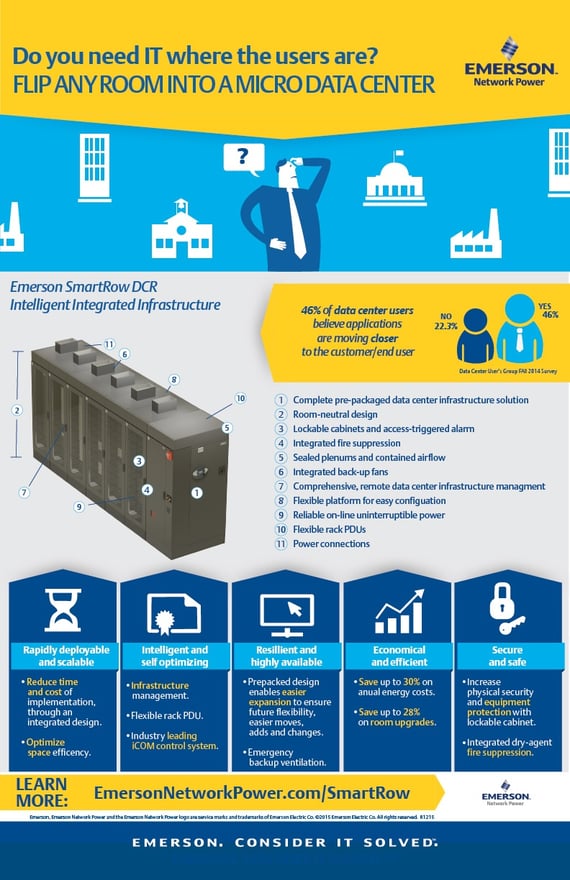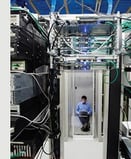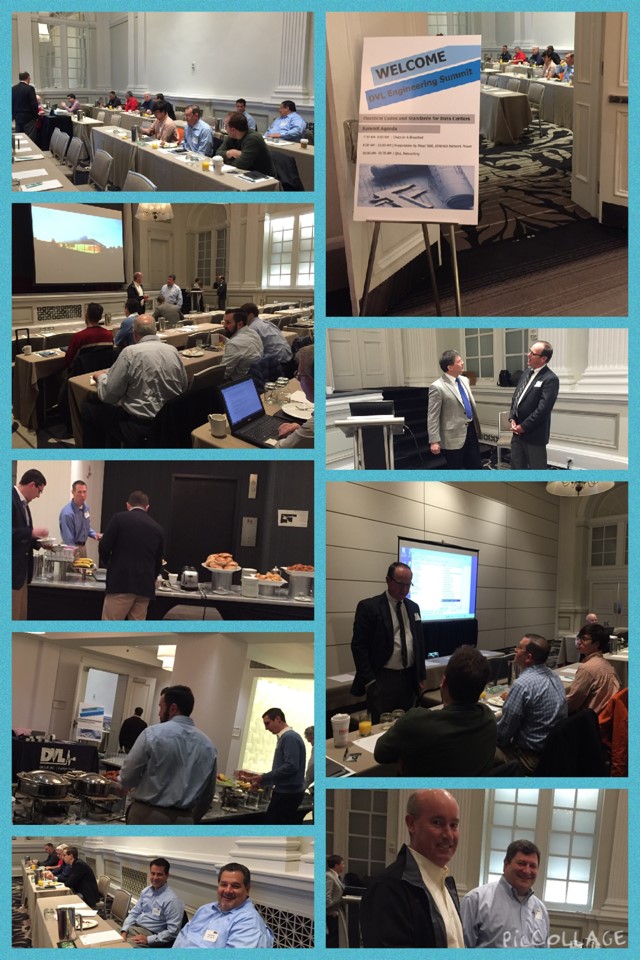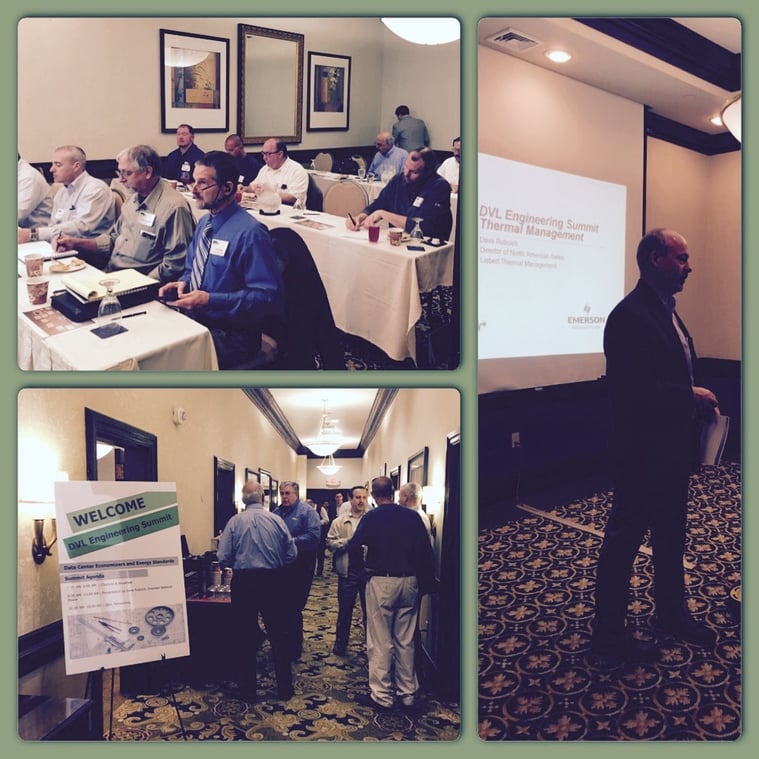
Learn More Here
For HVAC Emergencies: 1-866-DVL-HVAC | For UPS Emergencies: 1-800-LIEBERT
For Generator Emergencies in CO, NM, or WY:303-953-3128
For HVAC Emergencies, please call 1-866-DVL-HVAC
by Marissa Donatone on 12/29/15 8:31 AM

Learn More Here
Topics: Emerson Network Power, Data Center, data center design, DVL, monitoring, smart solutions, IT, smartrow
by Marissa Donatone on 7/27/15 8:15 AM
ASHRAE Journal Invites You to Attend a FREE Sponsored Webinar Presented by Emerson Network Power |
Emerging Technologies in Controls and Automation
Data-center cooling systems must be finely tuned for high efficiency and availability to be achieved. Most systems, however, lack the advanced controls needed to optimize thermal performance. Join us as Jason Gloeckner, Marketing Manager for Thermal Software Solutions for Emerson Network Power, explains how thermal controls are changing in response to data center trends and user preferences. Jason will discuss how new thermal-control strategies can help data center managers:

Click HERE to register for this FREE presentation. |
About the Presenter
 Ralph Conklin, Product Manager, Aftermarket Solutions for Thermal Management Support, Emerson Network Power:
Ralph Conklin, Product Manager, Aftermarket Solutions for Thermal Management Support, Emerson Network Power:
Ralph Conklin is Product Manager, Aftermarket Solutions for Thermal Management Support, at Emerson Network Power. In his current role, Ralph manages the aftermarket parts, retrofit kits, and energy efficiency upgrade products for Emerson's industry-leading thermal management equipment. In this webinar, he will describe new ways to deploy thermal management technologies for fast ROI while improving data center efficiency, protection and insight.
Ralph has more than a decade of experience in the data center market, including positions with Emerson in Thermal Management Engineering, New Product Development and Technical Support. He holds a Bachelor of Science in Mechanical Engineering from The Ohio State University and a Masters of Business Administration from Franklin University.
Topics: Emerson Network Power, Data Center, Thermal Management, cooling, Power and Cooling, advanced controls, data center managers, optimized performance, ASHRAE
by Marissa Donatone on 5/22/15 1:39 PM
 Make sure to catch Emerson Network Power's Critical Advantage Webcast Series on Tuesday, June 9, at 1 p.m. ET
Make sure to catch Emerson Network Power's Critical Advantage Webcast Series on Tuesday, June 9, at 1 p.m. ET
The New Era of Thermal Controls: See Where They Can Take Your Data Center
Thermal systems account for 38% of data center energy usage. A new generation of thermal system controls can help you reduce it.
Find out how by attending our Emerson Critical Advantage Webcast on May 18 – where we introduce the industry’s latest innovation in thermal system controls: the all-new Liebert® iCOM™ controls.
During our webcast, you’ll see how this new technology can:
Topics: Emerson Network Power, Data Center, energy, Energy Star, Thermal Management, energy efficiency, webcast, performance, iCom
by Marissa Donatone on 4/24/15 8:50 AM
On behalf of DVL and the speakers from Emerson Network Power, Thank You! We had an awesome time with all our great attendees over the course of this week's DVL Engineering Summit. We concluded or Engineering Summit, today at Le Meridien Hotel, Philadelphia, PA.
For future DVL Events be sure to check out our events page: www.dvlnet.com/events

Topics: Emerson Network Power, DVL, DC Power, Thermal Management, energy efficiency, Mechanical Engineering, Electrical Engineering, DVL Engineering Summit, AHRI, NFPA, Power and Cooling
by Marissa Donatone on 4/22/15 9:03 AM
Another great day at the DVL Engineering Summit. Mechanical are here getting the latest inforamation on Data Center Economizers and Energy Standards. Electrical Engineers are learning about Electrical codes and standards for Data Centers.
We are concluding our Engineering Summit tour at Le Meridien Hotel in Philadelphia on Friday, April 24th. We are excited to see you there!

Topics: Emerson Network Power, Data Center, data center energy, Green Technology, DC Power, 7x24 exchange, Thermal Management, Mechanical Engineering, Electrical Engineering, DVL Engineering Summit, AHRI
Philadelphia | Albuquerque | Boise | Denver | Harrisburg | Salt Lake City
Headquarters: 115 Sinclair Rd., Bristol, PA 19007
1-215-785-5950